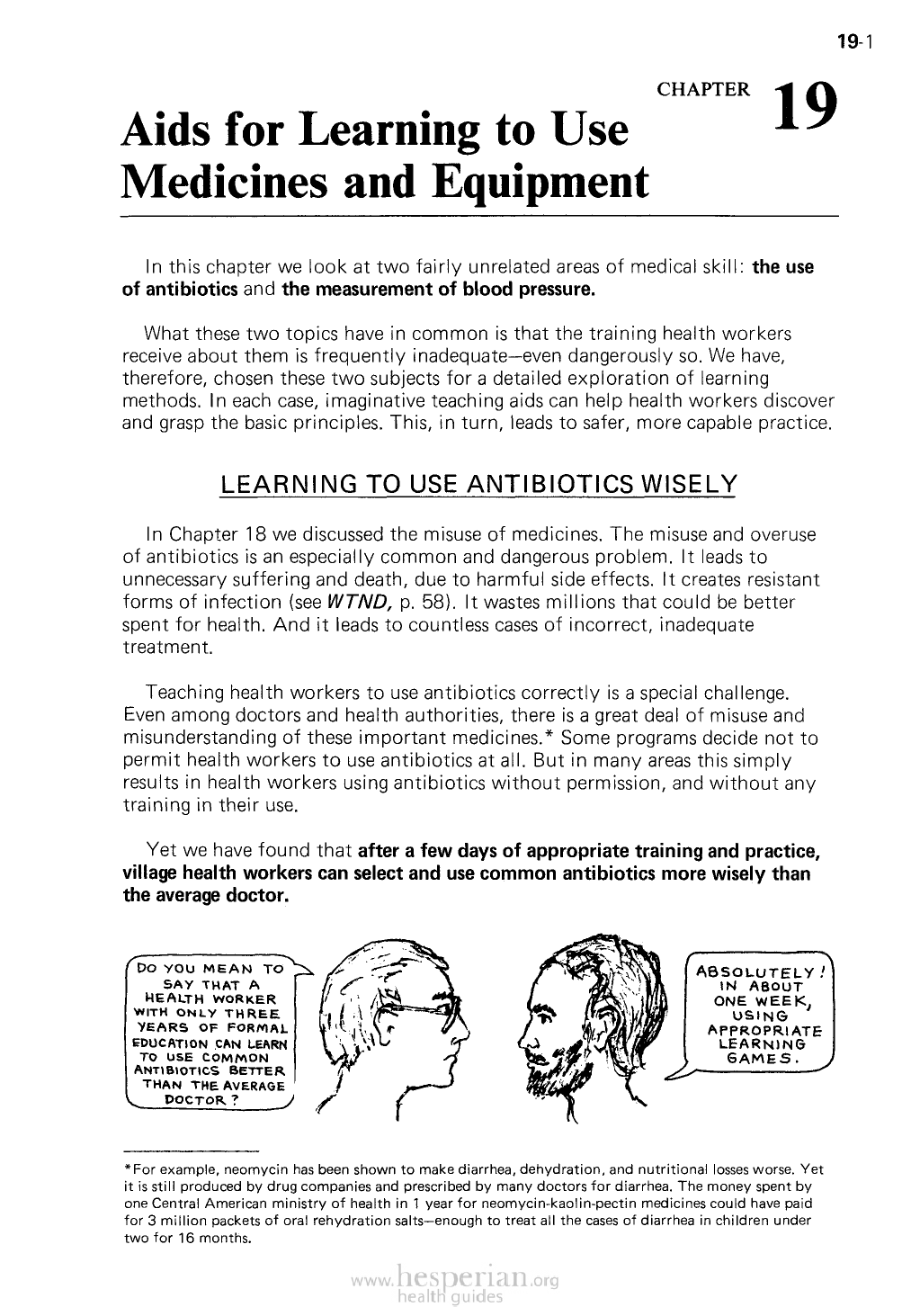
19Aids for Learning to Use CHAPTER
19-1
Medicines and Equipment
In this chapter we look at two fairly unrelated areas of medical skill: the use of
antibiotics and the measurement of blood pressure.
What these two topics have in common is that the training health workers receive
about them is frequently inadequate—even dangerously so. We have, therefore,
chosen these two subjects for a detailed exploration of learning methods. In each
case, imaginative teaching aids can help health workers discover and grasp the basic
principles. This, in turn, leads to safer, more capable practice.
LEARNING TO USE ANTIBIOTICS WISELY
In Chapter 18 we discussed the misuse of medicines. The misuse and
overuse of antibiotics is an especially common and dangerous problem. It leads
to unnecessary suffering and death, due to harmful side effects. It creates
resistant forms of infection (see WTND, p. 58). It wastes millions that could be
better spent for health. And it leads to countless cases of incorrect, inadequate
treatment.
Teaching health workers to use antibiotics correctly is a special challenge.
Even among doctors and health authorities, there is a great deal of misuse and
misunderstanding of these important medicines. * Some programs decide not to
permit health workers to use antibiotics at all. But in many areas this simply results in
health workers using antibiotics without permission, and without any training in their
use.
Yet we have found that after a few days of appropriate training and practice,
village health workers can select and use common antibiotics more wisely
than the average doctor .
*For example, neomycin has been shown to make diarrhea, dehydration, and nutritional losses worse. Yet
it is still produced by drug companies and prescribed by many doctors for diarrhea. The money spent by
one Central American ministry of health in 1 year for neomycin-kaolin-pectin medicines could have paid
for 3 million packets of oral rehydration salts—enough to treat all the cases of diarrhea in children under
two for 16 months.